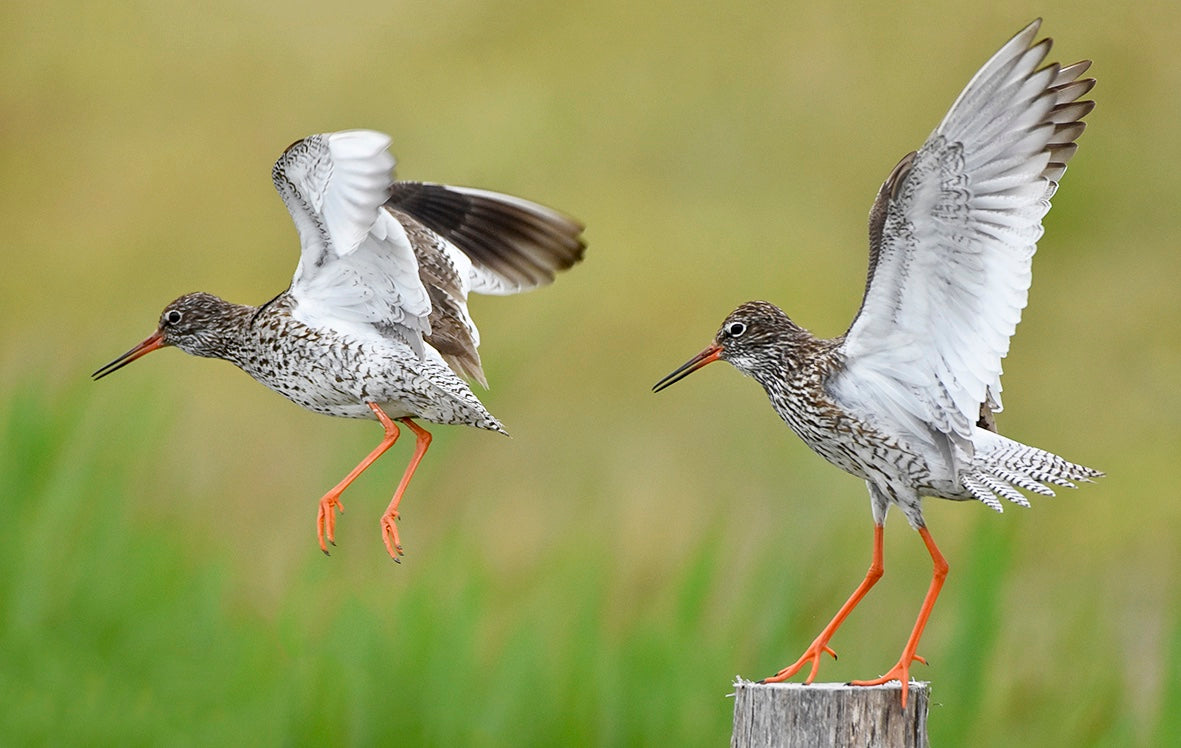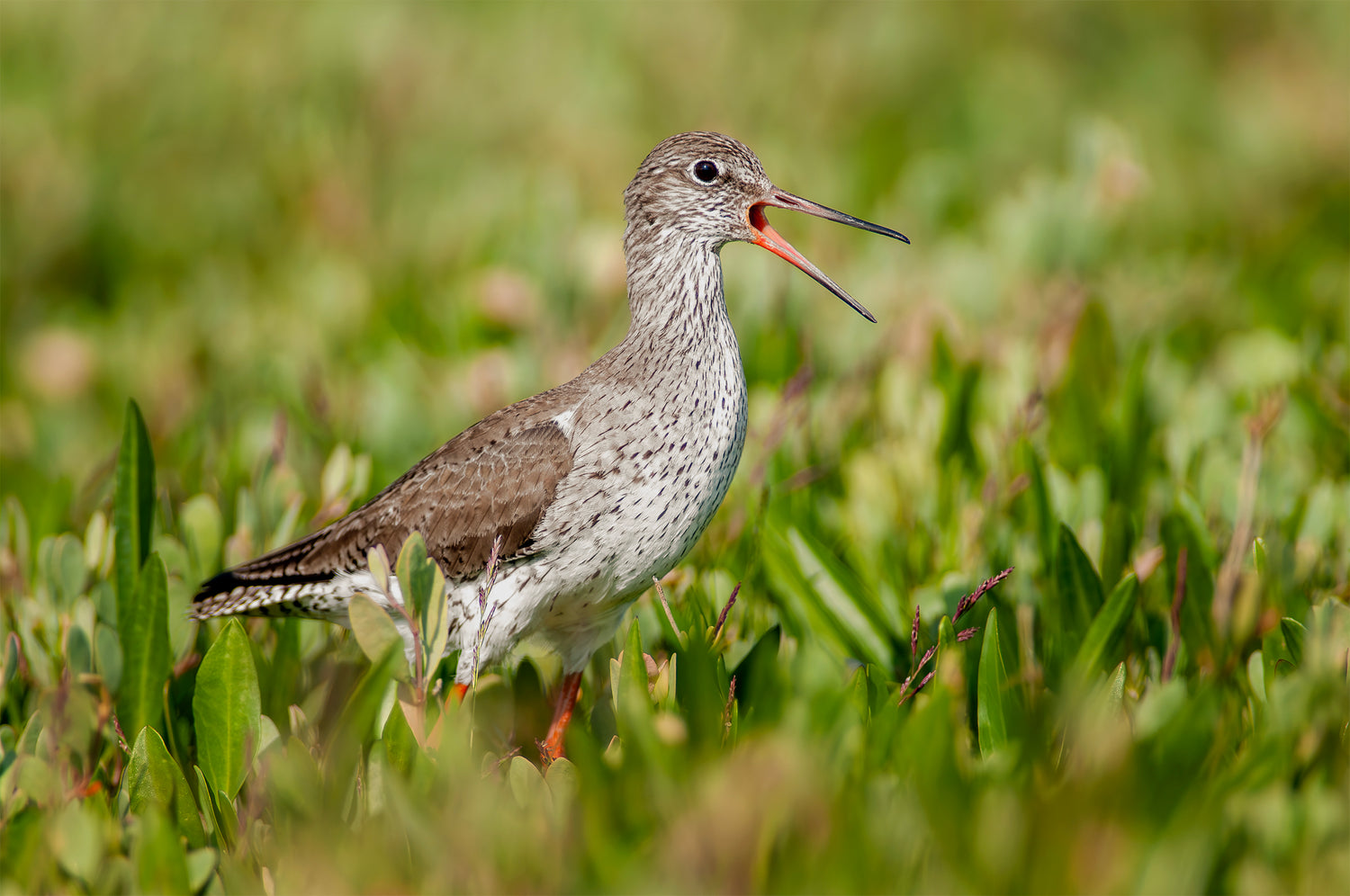
Common Redshank
Tringa totanus
Burray, Orkney islands, Scotland, 21:31, 1 September 2019. Eight tyuu-luu-luu calls of possible migrant, flying close to a North Sea beach. For a zoomed-in version of this sonagram see e) below. 190901.MR.213142.11
Please use headphones
Identification

a) Common Redshank Tringa totanus Tiree, Argyll and Bute, Scotland, 21:45, 7 September 2018 (JBr). Four tyuu-luu-luu calls of a nocturnal migrant; sonagram shows the first. Background: Greylag Geese Anser anser and distant car. 180907.MR.214555.12
b) Common Redshank Tringa totanus Besh Barmag, Siyazan, Azerbaijan, 02:37, 2 April 2019 (BB). Single tjuu-luu-luu call of a nocturnal migrant. 190402.MR.023749.01
c) Common Redshank Tringa totanus Sagres, Vila-do-Bispo, Portugal, 03:54, 21 August 2019 (GM). Single tjuu-luu-luu call of a nocturnal migrant. 190821.MR.035421.02
d) Common Redshank Tringa totanus Burray, Orkney islands, Scotland, 04:31, 2 September 2019. Single tyuu-luu-luu-luu call of a possible nocturnal migrant. 190902.MR.043107.21

e) Common Redshank Tringa totanus Burray, Orkney islands, Scotland, 21:31, 1 September 2019. Three tyuu-luu-luu calls of possible migrant, flying close to a North Sea beach; first call shown. For a longer version of this recording, with zoomed-in sonagram, see top of page. 190901.MR.213142.11
f) Common Redshank Tringa totanus Sagres, Vila-do-Bispo, Portugal, 01:10, 23 August 2018 (GM). Two tyuu-luu calls of a nocturnal migrant; second call shown. 180823.MR.011032.11
g) Common Redshank Tringa totanus Odeceixe, Aljezur, Portugal, 02:39, 24 August 2017. A single, rather ‘disorganised’-sounding tyuu-luu-luu call of a nocturnal migrant, with the second and third elements divided over two pitches. 170824.MR.023940.02
h) Common Redshank Tringa totanus Sagres, Vila-do-Bispo, Portugal, 05:03, 15 September 2018 (GM). A single tyuu-luu-luu call of a nocturnal migrant, with a lower final note. 180915.MR.050300.21
Flocks

i) Common Redshank Tringa totanus Texel, Noord-Holland, Netherlands, 01:23, 4 September 2018. Longer, more strident tyu-lu-lu-lu-lu-type calls of a flock of nocturnal migrants passing a lighthouse. Background: Common Tern Sterna hirundo. 180904.MR.012318.22

j) Common Redshank Tringa totanus Texel, Noord-Holland, Netherlands, 01:15, 3 September 2018. Mumbled and rather Eurasian Whimbrel Numenius phaeopus-like tyuu and tyuu-luu-luu calls of a small flock of migrants passing a lighthouse. 180803.MR.001850.01



